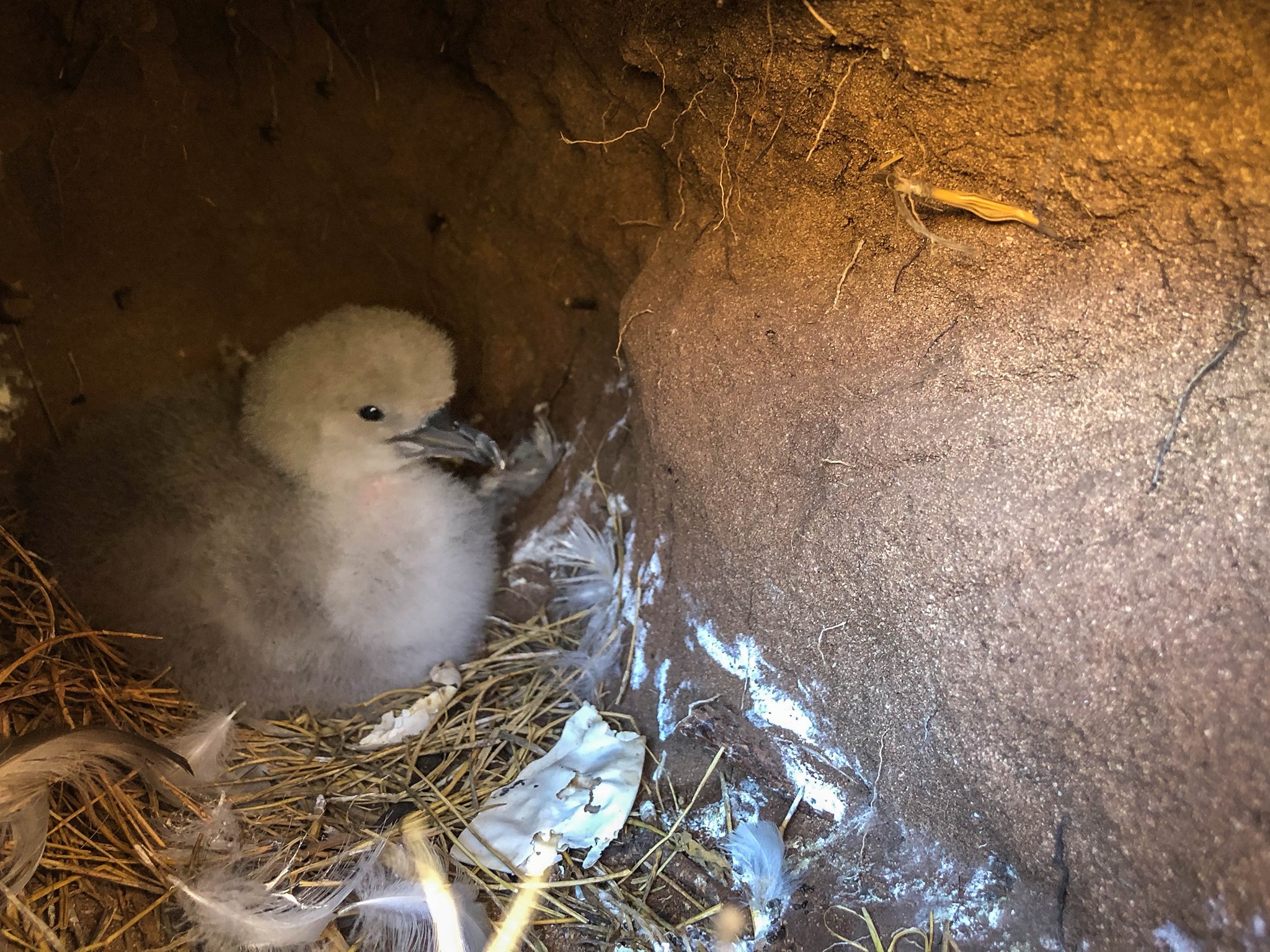
A downy Wedge-tailed chick in is burrow in the Mokio Preserve, photograph from the Molokai Land Trust
The Mokio Preserve on the Hawaiian island of Molokai has been identified as a “sea level rise safe” site to establish a new colony of Laysan Albatrosses Phoebastria immutabilis. Towards this end decoys and broadcasts of pre-recorded calls have been deployed by the Molokai Land Trust and its partners at the coastal Anapuka Dune Restoration Project site within the preserve and there are plans to erect a predator-proof fence next year (click here).
The latest news is that another Hawaiian seabird, the Wedge-tailed Shearwater Ardenna pacifica, has commenced breeding within the preserve, according to a report by the American Bird Conservancy: “signs of shearwater burrow excavation were noted in three different areas, and included five active nests. Two chicks were found in nests. Fossil bird bones have also been found at this site, indicating shearwaters historically nested at Mokio.” Previously, acoustic monitoring systems (song meters) set up in 2016 and also game cameras had resulted in detections of Wedge-tailed Shearwaters within the preserve. Signs of burrow excavation were first noticed in 2013 according to the Molokai Land Trust’s Facebook page.
One of the Mokio Preserve's Wedge-tailed Shearwater chicks, video by Josiah Ching, Project Coordinator, Molokai Land Trust
Currently a temporary fence to keep out deer along with an active trapping programme directed at cats and mongoose partially protects the preserve. Once the intended predator-proof fence replaces thia deer fence it can be expected it will facilitate growth of the new colony of Wedge-tailed Shearwaters. Then Laysan Albatrosses may become the next seabird species to commence breeding in the Mokio Preserve.
John Cooper, ACAP Information Officer, 08 October 2020

 English
English  Français
Français  Español
Español